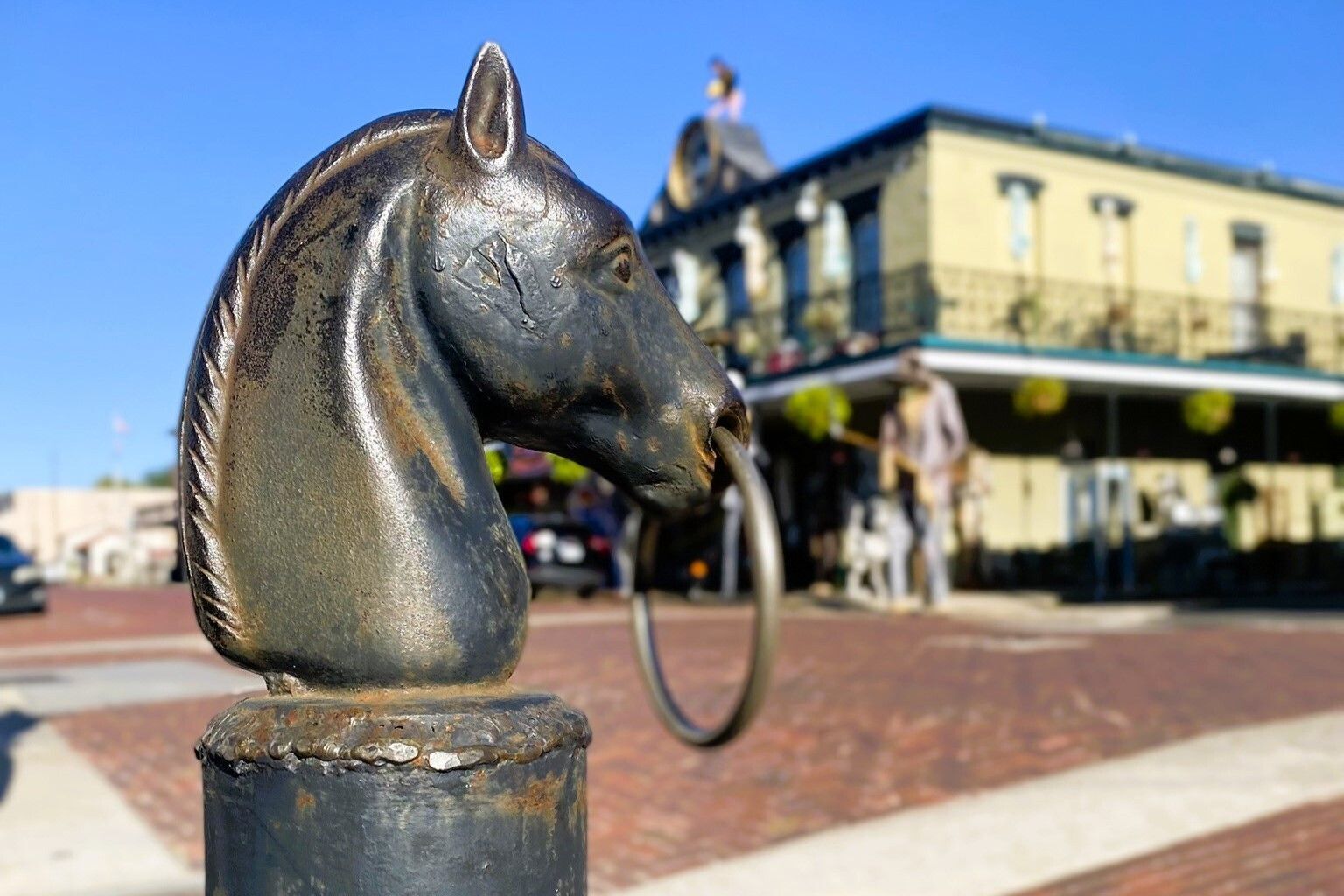
Mexican holidays have been celebrated in Texas since at least the 1750s, when it became popular to commemorate the feast of the Virgen de Guadalupe (December 12) with religious processions, dances, and bull fights. In the 1820s Tejanos added Mexican independence day, Diez y Seis, to the annual calendar of celebrations. Speeches, military parades, Mass, and formal balls and informal dances marked Texas’s ties to the new republic. Although Texas soon separated from Mexico, continued immigration and lasting economic and social ties meant continued observance of Mexican holidays, now including one brought by the recent immigrants, Cinco de Mayo. By the mid-twentieth century celebration of the Mexican victory over a French invasion force at Puebla de los Angeles on May 5, 1862, had become the single most important feast day in the Tejano holiday calendar—with good reason.
Ignacio Zaragoza, the Mexican general who led his battered forces to triumph over a professional European army, was born on March 24, 1829, here at Presidio La Bahía. His father, Miguel Zaragoza, an infantryman from Veracruz, had married a local member of an old Texas family, María de Jesús Seguín, a cousin of the Juan N. Seguín. In the Mexican military retreat following the Texas War of Independence, Miguel took his small family south of the Rio Grande, where they lived first in Matamoros and then in Monterrey. Ignacio’s education in these cities included a time in Monterrey’s seminary, which he soon abandoned for a brief career in business.
The military proved to be Ignacio Zaragoza’s true calling, however. In 1852 he joined the Nuevo León state militia at the rank of sergeant and the following year helped organize an army company, in which he received a captain’s commission. Throughout the civil wars that shook Mexico during the 1850s Zaragoza served the liberal cause. Earning the respect of his men and gratitude of his superiors, Ignacio rose to the rank of quartermaster under Benito Juárez, who named him minister of war in early 1861.
Zaragoza’s services were more urgently required in the field, however. Not long after Juárez brought peace to the country, he declared a moratorium on Mexico’s crushing European debts. Spain, soon followed by England and France, responded by sending a fleet to capture Veracruz in December 1861. Juárez asked Zaragoza to take command of the Army of the East and prepare defenses against the invaders at Puebla. When Spain and England withdrew in early 1862, France took advantage of the opportunity and the presence of sympathetic Mexican monarchists to embark on a war of conquest. Zaragoza, who had been preparing the city’s defenses, was ready for the French when they arrived. Throughout the day of May 5, French assaults were repulsed; one remarkable stand came late in the afternoon and was performed by one of Zaragoza’s lieutenants, Brigadier General Porfirio Díaz.
The French retreat with losses estimated at between 500 and 1,000 as compared with Mexican casualties of 86, made Ignacio Zaragoza a national hero. When the French threat momentarily receded in August, the general ventured to Mexico City, where Benito Juárez and the Mexican liberal establishment feted him. It was to be his last triumph, however, for on his return to Puebla to resume his command he became ill with typhoid fever and died on September 8, 1862. His body was returned to the capital for a state funeral, and on September 11 Juárez issued a decree renaming Puebla de los Angeles Puebla de Zaragoza and declaring Cinco de Mayo a national holiday.
The holiday might soon have disappeared had not Benito Juárez and his republican forces not struggled over the next five years to expel the French and the man the invaders had put on the Mexican imperial throne they created. With the execution of Emperor Maximilian in June 1867 and the republic restored, the pride, determination, and independence from foreign domination embodied in Cinco de Mayo was vindicated. The day could almost be reckoned a second independence day for a country that had known little peace since the end of the Spanish empire almost a half-century earlier.
Aside from Ignacio Zaragoza’s Texas birth there are more substantial reasons for Tejanos to give some thought to Cinco de Mayo and its hero. The Zaragozas’ links to Texas were not severed by Mexico’s loss of the region in 1836. Well into the 1850s the family had business interests in San Antonio and family ties to at least one of its families. Zaragoza-Seguín business dealings took the cousins to San Antonio on occasion. During one visit to Monterrey in 1858 Juan Seguín, Sr., who had fought for Texas independence at San Jacinto and who had served as mayor of San Antonio, acted as godfather at the baptism of Ignacio Zaragoza’s second son Estanislao and served at Puebla with Ignacio. These personal, political, military, and business ties remind us that the border was as fluid then as it is today and counter the pointless, but self-serving pronouncements of American nativists.
Many of the Mexicans who came to Texas in the late nineteenth and early twentieth centuries sought to escape continued political unrest and economic hardship. Some were seeking a new life north of the border, many others felt their stay in the United States a temporary refuge. For both groups, however, Cinco de Mayo–along with Diez y Seis and the Virgen de Guadalupe feast–served as a potent reminder of their heritage. In the course of the twentieth century, even as the holiday lost some of its status in Mexico, it remained for the Mexican American community an important link to the old country. For Tejanos, Ignacio Zaragoza makes those ties even more personal and, hopefully, meaningful.
Here’s where I cross the line from history into sociology or anthropology, so I’ll keep the observations brief in order not to get into too much trouble. Cinco de Mayo is, of course, not just a Tejano holiday, or even a border region phenomenon. Mexicans migrating to all parts of the United States have made for Cinco de Mayo for Mexican Americans what St. Patrick’s Day is for Irish Americans. Cities such as New York, St. Louis, St. Paul, Minnesota, Louisville, KY, Dade City, Florida, and Detroit among many others, will be celebrating. Parades, art exhibits, dance performances, and displays of arts and crafts, will reinforce a sense of the vitality and contributions of Mexican culture in the U.S., even as most of the crowd mistakenly tells reporters from newspapers and TV stations that the party is all about Mexican independence. The point is, they will be celebrating their roots and their status as contributing members of American society.
Because, of course, they are being encouraged to celebrate by the national beer and party-snacks companies that stand to make lots of money off the event. These companies have, in recent years, discovered that Latino culture in general, and Mexican American culture in particular, is a tremendously undertapped consumer market. Americanized Mexican food has swept the nation, Mexican beers have displaced the German brews as the most popular imports, and at least in the Southwest, Norteño music has made significant strides in attracting a non-Mexican audience. Cinco de Mayo for them is one more event at which they can promote extra consumption of their products. Lest we feel that the Mexican American community is somehow being exploited in this regard, let me point to the recent trend to nationalize Mardi Gras. It came to Austin a generation ago, and recently it has spread to such un-Catholic places as Seattle, Washington. Ask the majority of the participants at one of these pseudo-Mardi Gras celebrations what the party’s all about, and be prepared for a blank stare.
To give you one example of this commercialization, the Tabasco company Web site offers an entire site dedicated to celebrating Cinco de Mayo, including decorating ideas such as stringing “chili-pepper lights” in your backyard, and a menu of eight recipes, all of course, including Tabasco sauce–including a dessert called “fire and ice cream.”
Well, enough of that. If I have to leave you with one point it would be that to the degree to which Cinco de Mayo has become a general celebration, especially here in Texas, it shows how far the Mexican American community has come in the last half-century.

